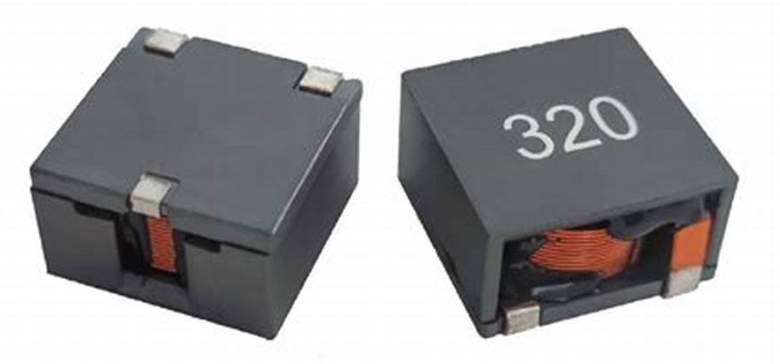High Current Inductors: Key Components in Modern Power Electronics

High current inductors are indeed key components in modern power electronics, serving as the backbone for energy storage, filtering, and power management in systems pushing 10 A to hundreds of amps. From EVs to renewable energy and data centers, these inductors handle the heavy lifting where efficiency, thermal resilience, and compactness are non-negotiable. Let’s explore why they’re critical, how they fit into today’s designs, and what makes them stand out.
Why They’re Key
Energy Storage and Transfer
Role: Store energy in magnetic fields (E=12LI2E = frac{1}{2} L I^2E=21LI2) during switching cycles, releasing it smoothly.
Where: Buck/boost converters, inverters—core to DC-DC and DC-AC conversion.
Example: A 50 µH, 100 A inductor in an EV charger stores energy at 100 kHz, delivering steady 400 V output.
Why Critical: High current demands stable LLL under load—saturation kills efficiency.
Ripple and Noise Filtering
Role: Smooth out switching ripple or harmonics, keeping power clean.
Where: SMPS outputs, PFC circuits, motor drives.
Example: A 47 µH, 30 A inductor in a 5G PSU cuts 1 MHz ripple by 20 dB, protecting downstream RF gear.
Why Critical: High currents amplify noise—inductors tame it without choking the flow.
Efficiency Optimization
Role: Minimize losses (core and copper) to hit 95-99% efficiency targets.
Where: High-power systems where every watt counts (e.g., server farms, solar inverters).
Example: A 20 A inductor with 5 mΩ DCR loses 2 W vs. 10 W at 25 mΩ—huge at scale.
Why Critical: Modern electronics can’t afford heat or waste, especially at 50-500 A.
Size and Power Density
Role: Pack high LLL and current capacity into tight spaces.
Where: EVs, portable power, 5G base stations.
Example: A 10 µH, 50 A planar inductor fits a 10x10 mm PCB slot, driving a compact GaN PSU.
Why Critical: Smaller inductors enable denser, lighter systems—key for mobility and scalability.
Design Features in Modern Context
High Saturation Cores: Powdered iron (1-2 T) or metal alloys (1-1.5 T) handle 100 A+ without LLL collapse—ferrite’s 0.4 T caps out fast.
Low DCR: Flat wire or foil windings drop resistance to <5 mΩ, cutting I2RI^2 RI2R losses at 50 A.
High-Freq Capability: Alloys and low-parasitic designs suit 1-5 MHz SiC/GaN switching—old ferrite lags here.
Thermal Resilience: 125-150°C ratings with heatsinks or potting keep them alive at 20-100 W dissipation.
Compact Builds: Shielded SMDs or planar types shrink footprints for PCB integration.
Applications in Modern Power Electronics
Electric Vehicles (EVs)
What: Boost converters, inverters, onboard chargers.
Need: 100-500 A at 50-400 V, 100 kHz-1 MHz.
Example: A 50 µH, 150 A inductor in a 100 kW charger smooths GaN-switched output.
Key: High saturation, low loss—every percent efficiency extends range.
Renewable Energy Systems
What: Solar inverters, wind turbine converters.
Need: 50-200 A at 20-100 kHz, high reliability.
Example: A 200 µH, 80 A inductor in a 10 kW solar inverter filters 25 kHz PWM.
Key: Handles DC bias, cuts EMI for grid compliance.
Data Center Power Supplies
What: 48 V-to-1 V DC-DC converters for CPUs/GPUs.
Need: 20-100 A at 500 kHz-2 MHz, ultra-compact.
Example: A 22 µH, 40 A planar inductor in a 1U PSU hits 98% efficiency.
Key: Density and low loss—cooling’s tight in racks.
5G Infrastructure
What: Power amps and base station PSUs.
Need: 10-50 A at 1-2 MHz, low EMI.
Example: A 47 µH, 30 A inductor in a GaN PSU keeps RF noise down.
Key: High-freq stability, shielding—RF hates interference.
Industrial Motor Drives
What: VFDs, servos, robotics.
Need: 50-200 A at 10-50 kHz, ruggedness.
Example: A 1 mH, 100 A inductor in a 480 V drive smooths 20 kHz harmonics.
Key: Saturation tolerance, thermal endurance—downtime’s costly.
Modern Trends
SiC/GaN Push: 1-5 MHz switching demands inductors with low core loss and high SRF—alloys lead.
Miniaturization: Planar and coupled inductors shrink 30-50%, vital for EVs and 5G.
Efficiency Gains: 1-2% bumps (e.g., 97% → 99%) from flat wire and hybrid cores—huge at 100 kW.
Cost vs. Performance: Basic powdered iron still rules 20-50 A apps; alloys dominate high-end.
The hype might tout “next-gen” nano-cores, but reality leans on proven advances—metal alloys and flat wire cover most needs. Ferrite’s not dead either—cheap and solid for lower currents or frequencies.
Why They Matter Now
Scale: Power demands are soaring—100 A is routine, 500 A isn’t rare.
Efficiency: Regulations (e.g., 80 PLUS) and green goals force loss cuts.
Density: EVs and 5G can’t lug bulky coils—size is king.
Reliability: High current means high stakes—failure fries systems.
In short, high current inductors aren’t just parts—they’re enablers of modern power electronics’ push into higher power, smaller footprints, and tighter margins.
Email us
Warning: Undefined variable $pronamepx in D:\wwwroot\www.resistorsupplies.com\moban\en_inc\ziliao.php on line 67
Fatal error: Uncaught TypeError: count(): Argument #1 ($value) must be of type Countable|array, null given in D:\wwwroot\www.resistorsupplies.com\moban\en_inc\ziliao.php:67 Stack trace: #0 D:\wwwroot\www.resistorsupplies.com\ziliao.php(146): include() #1 {main} thrown in D:\wwwroot\www.resistorsupplies.com\moban\en_inc\ziliao.php on line 67
